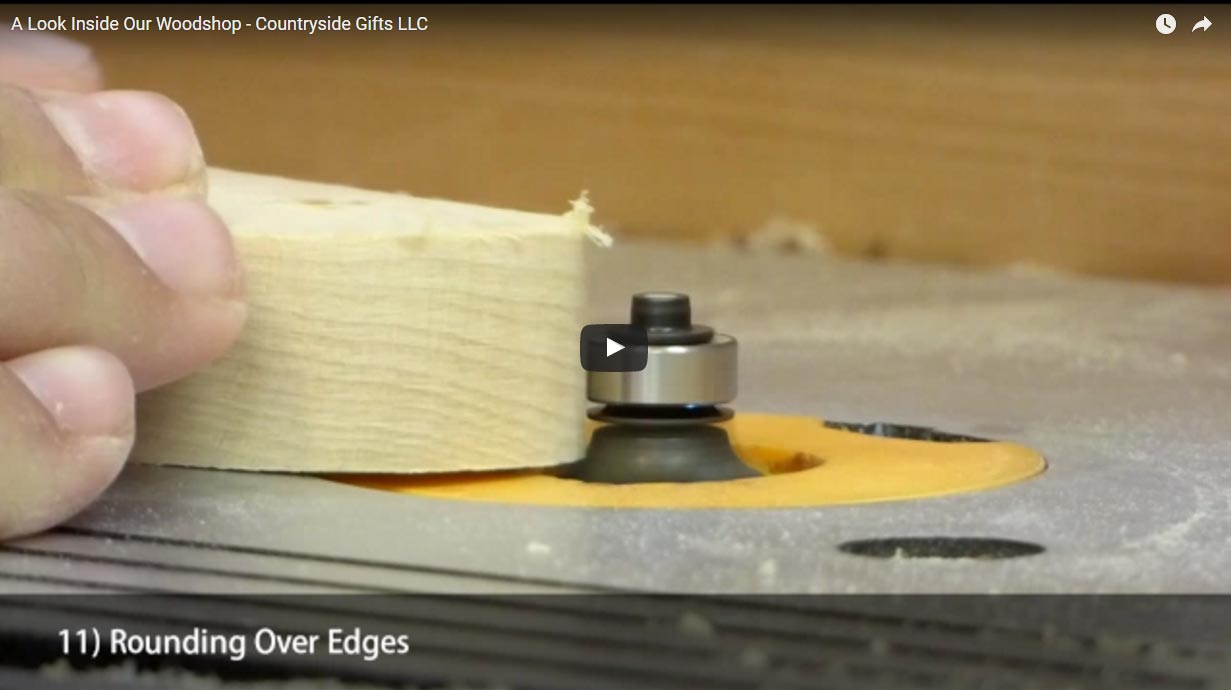Care and Maintenance
What can I use to clean my wooden item?
- Solvents and household cleaners are not to be used on our products. Some of the finishes we use can be ruined by cleaners or solvents such as alcohol, ammonia or other household cleaners. As a result, we recommend the following:
- On natural (unfinished) items, we recommend using a non-dyed, lint-free cloth (such as an old cotton t-shirt) and wiping the item. We do not recommend using any cleaners or water on these types of items as natural wood tends to swell and raise its grain when water is applied.
- On oiled items (tung oil / mineral oil), we recommend using a non-dyed, lint free cloth (such as an old cotton t-shirt) to dust the item. A fresh coat of tung oil, butcher block or mineral oil respectively can be used to restore luster and shine.
- On organic beeswax finish, we recommend using a non-dyed, lint-free cloth (such as an old cotton t-shirt) and wiping the item lightly. Rubbing the item with our organic beeswax finish will restore the shine and protective coating to the surface. Do not use cleaners or waters as this can cause damage to the finish or item.
- On dyed items, we recommend using a non-dyed, lint-free cloth (such as an old t-shirt) and wiping the item. It is best to use a lint-free cloth because lesser quality cloths can leave some fuzzy debris on end grain areas. Avoid getting dyed items wet. Dyed items are colored using a non-toxic dye and re-wetting can sometimes cause the dye to bleed out of the item and into the surrounding surfaces.
- On painted items, we recommend using a slightly water dampened non-dyed lint-free cloth (such as an old cotton t-shirt) and wiping the item. Avoid over dampening the cloth and item as well as scrubbing or vigorously rubbing the item. Doing so can harm the finish.
- On clear-gloss finished items (polyurethane), we recommend using a non-dyed, lint free cloth (such as an old cotton t-shirt) to dust the item. Applying a small amount of Pledge® or Murphy® Oil Soap to a cloth and then lighting wiping the item may be used to shine up the item and restore the gloss.
- On acrylic plastic panels (picture frame windows), we recommend using a non-dyed, lint free cloth and lightly spraying some window cleaner, such as Windex® into the cloth and then rubbing the acrylic lightly in small circles until the windows are clear and streak free. Avoid getting the cleaner on the wooden parts as this can sometimes aversely effect the finish.
- Decorative Photo Plaques, we recommend using a non-dyed, lint-free cloth (such as an old cotton t-shirt) and wiping the very very gently. A non-abrasive feather duster can also be used on these items. Never spray water or any cleaner onto these items. Doing so may cause the inks and dyes used in the print to run.
- Models & Other Delicate Items, we recommend lightly dusting accessible, non-fragile areas with a soft, non-dyed, lint-free cloth. On harder to reach or more delicate areas, we recommend the use of bottled compressed air such as the type that are used to clean electronics. Hold the can upright when spraying to avoid getting any liquid on the item.
-
How do I tell what finish my item has?
- The finish your item contains is listed on the product description on our site. If in doubt, it is best to simply stick with a soft, dry cloth and lightly dust the item. Most finishes will respond perfectly fine to a light spray of furniture polish, however, using the correct method will help your new treasure look like new for years to come!
-
Can I place the item in water?
- No. Wood and water do not mix well. Getting a wooden item wet may cause the grain to raise up and become rough and may also cause the item to crack, loosen, or its finish to become ruined. Water can also also loosens the bond between glue and wood.
-
The wheels / moveable part on an item are not moving freely. How do I resolve this?
- Our products are tested before they leave the wood shop. Sometimes wheels and other parts can stick due to humidity. Humid conditions can make the wood expand and thus limit the movement of some parts. We first recommend that you work the part back and forth. After doing this over and over again for a while the part will usually loosen and spin or move more freely.
If the part is still not moving freely, the item may have gotten wet or it is in a humid environment. Let the item dry and take the item into a less humid environment and leave it there for a few days. Again work the part back and forth and the part should move freely once the wood contracts.
-
The wheels / moveable part on an item is squeaking slightly. How do I resolve this?
- This is completely normal and is one of the traits of wooden items. When two pieces of dry wood rub against each other, a slight squeak is common. This squeaking can be minimized by adding a few drops of beeswax onto the axle / shaft of the item. It can sometimes be hard to get wax into an area so placing some wax on a cotton swab or toothpick often works well. Warming the beeswax by holding it under warm (not hot) water for a few minutes can also make it easier to work with. Beeswax can be purchased at most craft stores and some discount department stores.






